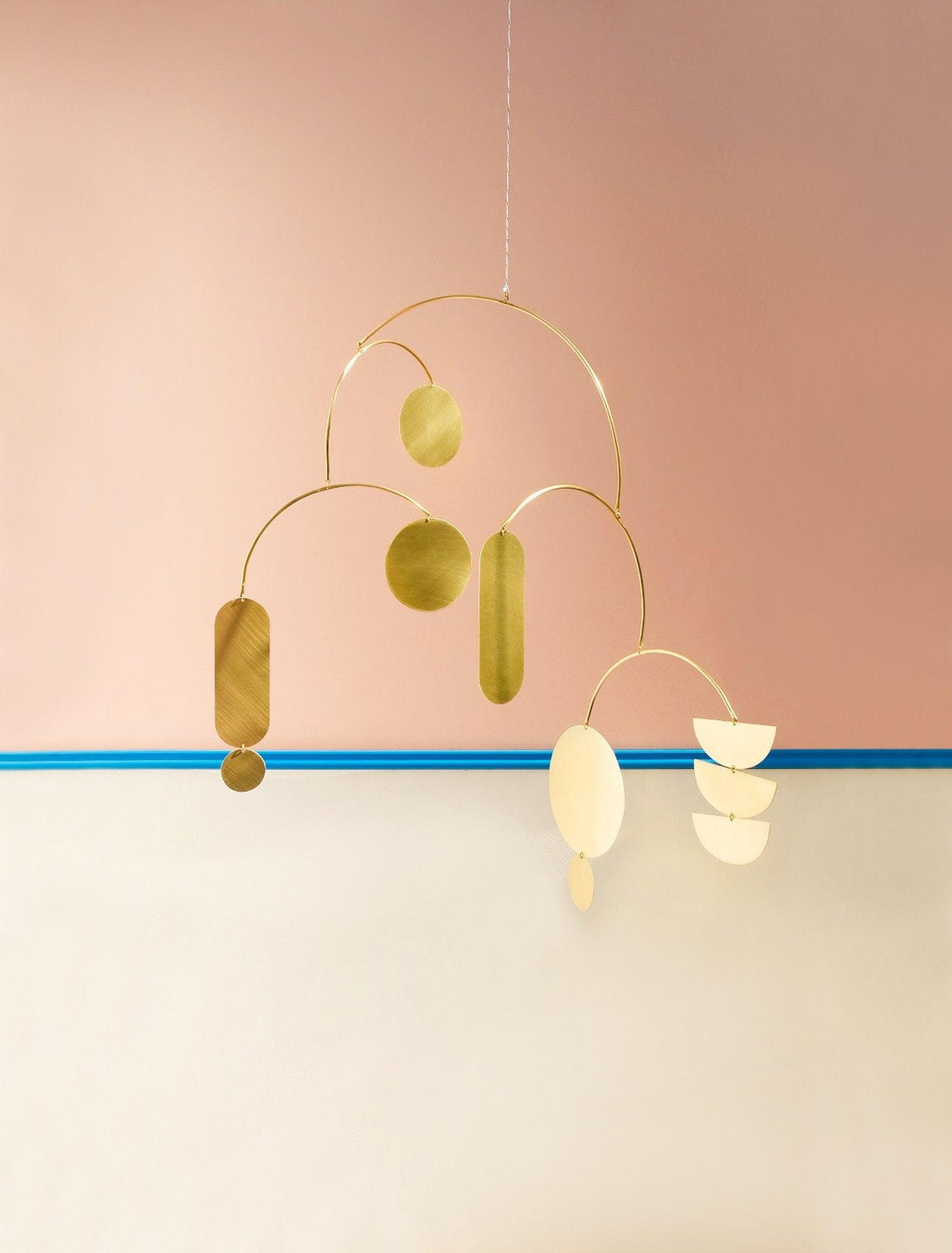Whimsical, beautiful and great distraction for when they’re losing it.
By Alexandra Whiting
A mobile can be a really standout feature in a nursery. It’s like art and function for babies, because it looks beautiful, but it moves and mesmerises them just long enough for you to switch their nappy or pull a jumper over their head (which they all otherwise can’t believe you would do to them).
There are different styles, soft or shiny, musical or rotating and different ways of using them, but as with everything in kids’ rooms: safety first. So we asked metal artist and mobile creator Sacha Jacobsen, founder of have faces, some a pattern, so it depends on your style. “The brass I use for making my mobiles works with any kind of decor,” says Sacha. “It’s such a versatile material and adds a warm, earthy, natural element to the nursery that’s calming for bubs. Personally, I am in love with rattan at the moment and although my kiddies are a little older now, the girls have rattan headboards and a brass mobile in the corner.” She adds that there are no rules when it comes to styling your baby’s room, it’s entirely up to your own style and how it works with the rest of your home. I have always liked to keep my babies’ rooms quite neutral and relatively simple with a few pops of colour here and there. Our aesthetic is kind of neutral and a little bit beachy with a few quirky pieces thrown into the mix to keep it interesting, like the felt animals heads in the kids rooms.
Find a location
Children’s mobiles should not contain any small pieces that could fall and be picked up by babies. Because that is a choking hazard, so be wary of any DIY hanging creations. It shouldn’t hang over your sleeping baby (nor should framed art or even wall decals), and it needs to be high enough so that your little one cannot reach up and touch it. Otherwise, practicality is the golden rule. “You need to choose a location where there will be enough room for your mobile to move freely without bumping into any walls or being low enough for people to walk into,” says Sacha.
Make it work
“Next you need to locate the joist,” says Sacha. Yeah, if you’ve only ever hung IKEA frames with 3M hooks, this might be time to call in some help, but if you know what you’re doing, or willing to learn, you got this. “A joist is the wooden beam that runs across your ceiling. You can find it using a stud finder that you can get from a hardware store, or you can use your knuckle to knock on the ceiling and when you hear a short, firm sound, (not hollow) that’s it! Once you've found this, mark a little dot with your pencil. Then, grab your drill and drill a pilot hole using a drill bit (smaller than your hook thread) where you marked the dot. After this you can screw in your cup hook by hand until it's flush with the ceiling. Finally, take some fishing line or whatever you choose to hang it with and thread it through the soldered top ring of the mobile, tie it to your desired length, tie a strong knot and loop it over the hook.” You’ll have earned yourself a cup of tea, or a wine, after that.

































